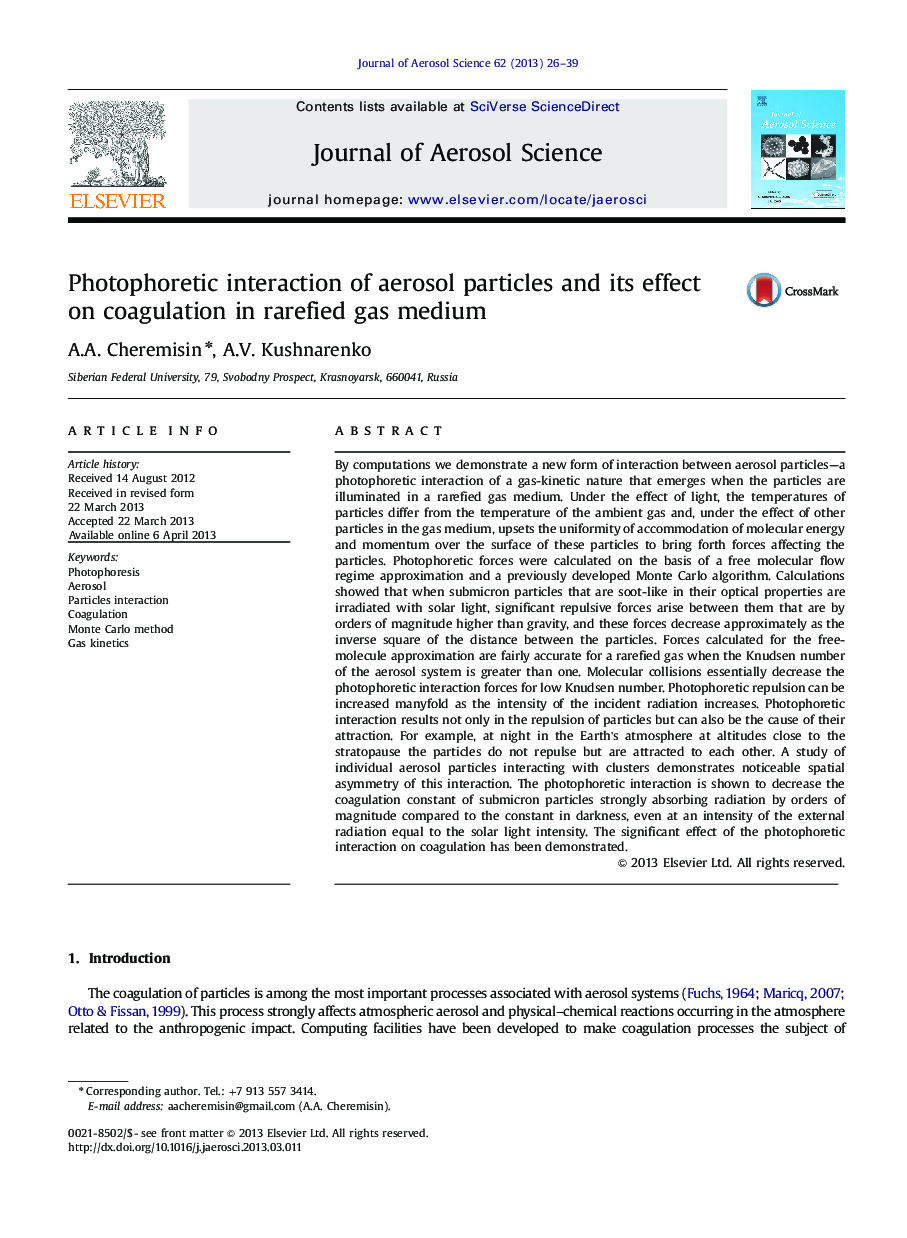| کد مقاله | کد نشریه | سال انتشار | مقاله انگلیسی | نسخه تمام متن |
|---|---|---|---|---|
| 4452489 | 1620761 | 2013 | 14 صفحه PDF | دانلود رایگان |

• A new effect-a photophoretic interaction of aerosol particles is described.
• Photophoretic repulsion forces are by order of magnitude higher than gravity.
• The forces decrease approximately as square of the distance between the particles.
• This interaction can considerably influence coagulation of aerosol particles.
By computations we demonstrate a new form of interaction between aerosol particles—a photophoretic interaction of a gas-kinetic nature that emerges when the particles are illuminated in a rarefied gas medium. Under the effect of light, the temperatures of particles differ from the temperature of the ambient gas and, under the effect of other particles in the gas medium, upsets the uniformity of accommodation of molecular energy and momentum over the surface of these particles to bring forth forces affecting the particles. Photophoretic forces were calculated on the basis of a free molecular flow regime approximation and a previously developed Monte Carlo algorithm. Calculations showed that when submicron particles that are soot-like in their optical properties are irradiated with solar light, significant repulsive forces arise between them that are by orders of magnitude higher than gravity, and these forces decrease approximately as the inverse square of the distance between the particles. Forces calculated for the free-molecule approximation are fairly accurate for a rarefied gas when the Knudsen number of the aerosol system is greater than one. Molecular collisions essentially decrease the photophoretic interaction forces for low Knudsen number. Photophoretic repulsion can be increased manyfold as the intensity of the incident radiation increases. Photophoretic interaction results not only in the repulsion of particles but can also be the cause of their attraction. For example, at night in the Earth's atmosphere at altitudes close to the stratopause the particles do not repulse but are attracted to each other. A study of individual aerosol particles interacting with clusters demonstrates noticeable spatial asymmetry of this interaction. The photophoretic interaction is shown to decrease the coagulation constant of submicron particles strongly absorbing radiation by orders of magnitude compared to the constant in darkness, even at an intensity of the external radiation equal to the solar light intensity. The significant effect of the photophoretic interaction on coagulation has been demonstrated.
Journal: Journal of Aerosol Science - Volume 62, August 2013, Pages 26–39